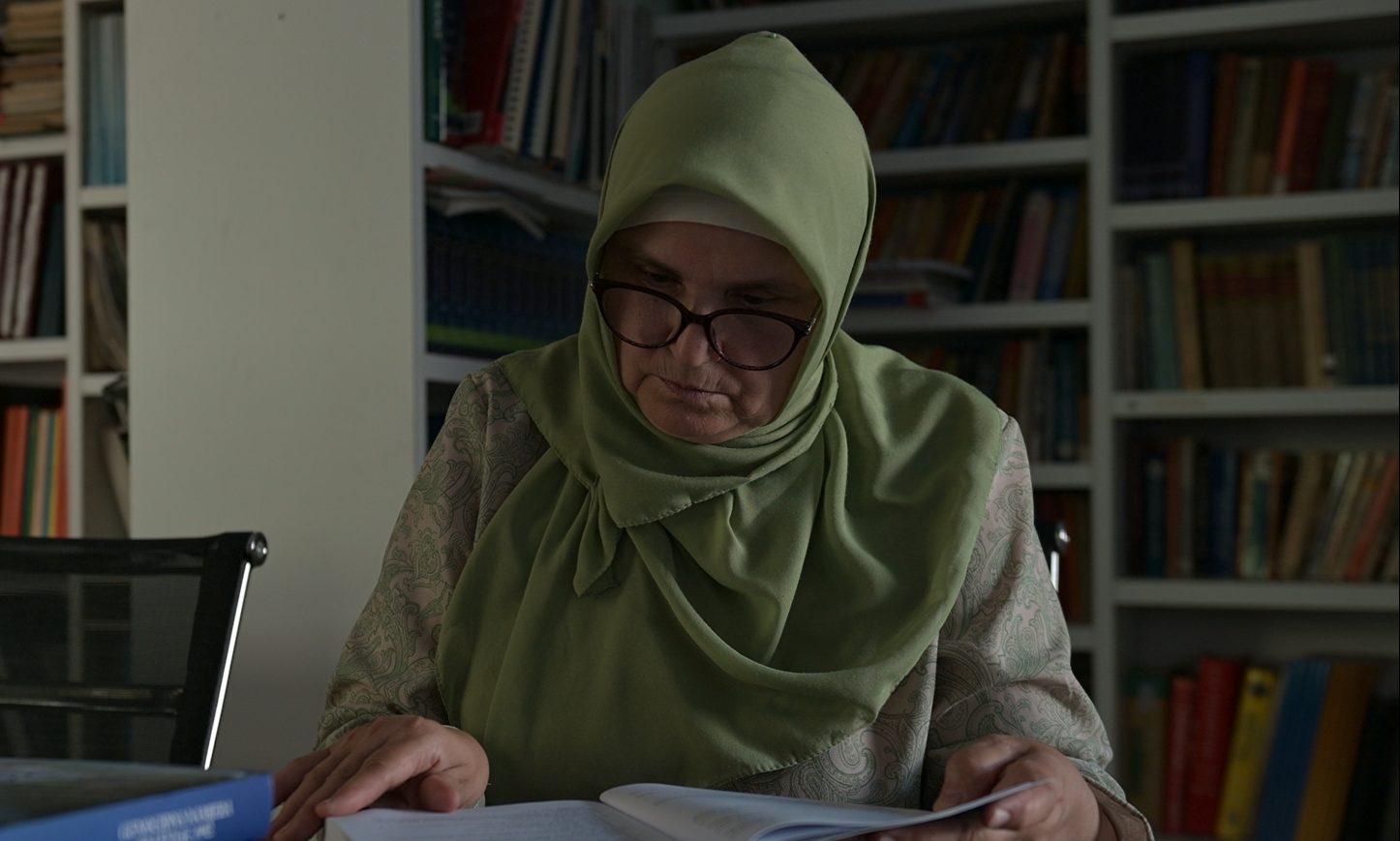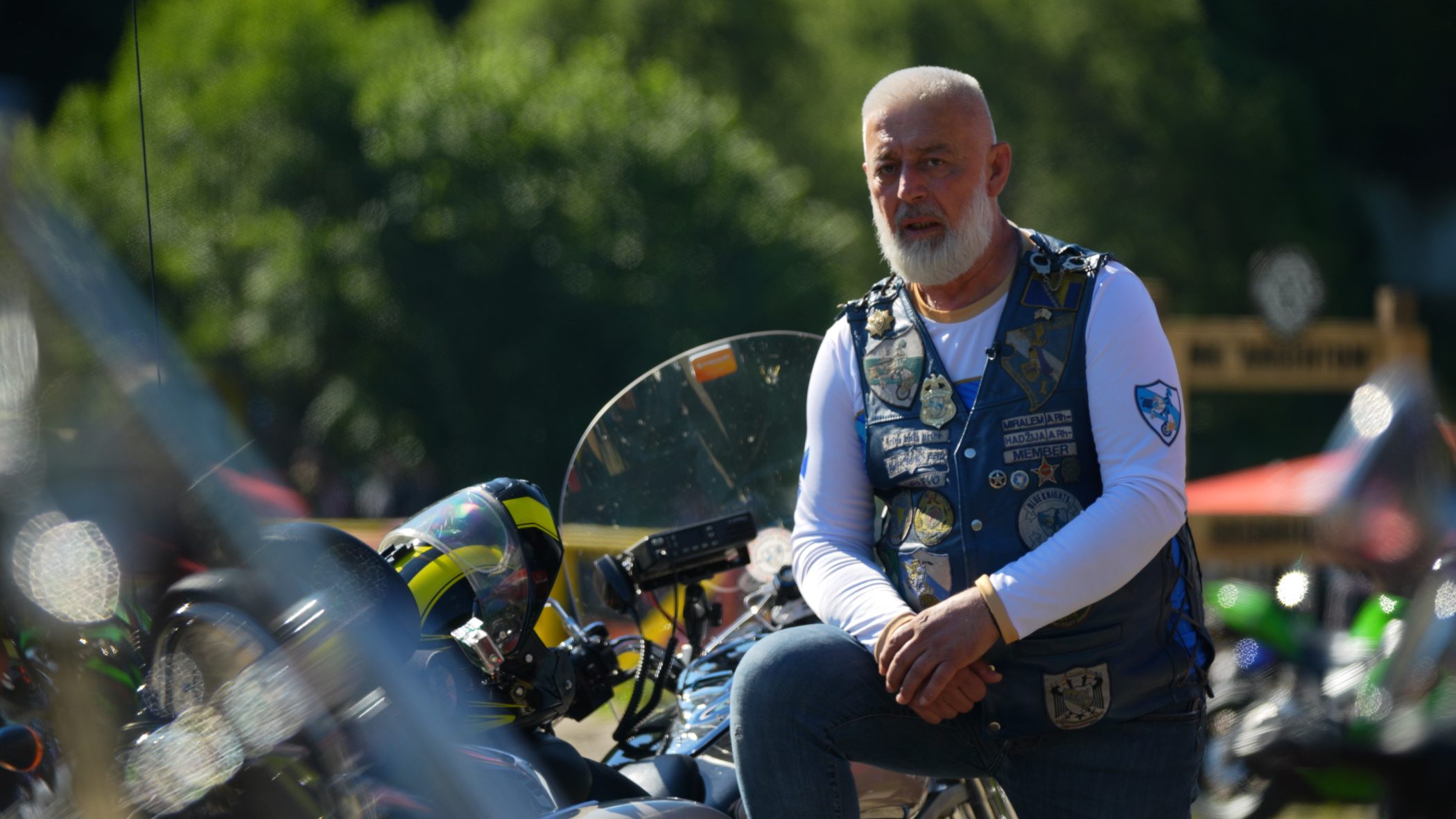This post is also available in: Bosnian
When the aid workers get out of the car at the refugee camp near the Bosnian city of Tuzla, the children rush towards them.
“Dobar dan! Dobar dan!” they shout, wishing them a good day.
Sanja Markovic, a social worker, is visiting them on behalf of the non-profit help organisation Snaga Zene (Women’s Power). She has known the children for two years now and asks them to fetch their mothers.
One boy, armed with a plastic toy gun, runs towards one of the pale white houses while shooting imaginary enemies around him.
The cheerful attitude of the children contrasts starkly with the appearance of their mothers who are arriving one by one at the camp’s main building. Their bleached-out T-shirts and old jackets hang over their sinewy shoulders.
“Don’t let their grey hair and face lines confuse you,” says Markovic. “They are less old than you would think. When I arrived here the first time, I mistook a 40-year-old woman for 60. There are many health issues because of poverty.”
In this remote mountainous area, 20 kilometres outside Tuzla, transport options are limited, and the women of Camp Jezevac feel isolated and forgotten.
“The people of Tuzla don’t know that there is a camp here and they have no idea of the living condition here. Nobody ever comes here,” says Markovic.
A dirt road leads to the collection of white houses that were built by the United Nations to shelter the women and a few men who survived the genocide in Srebrenica. Jezevac is one of three such camps for displaced people in the Tuzla area.
They were meant as temporary housing, but 22 years later, there are still 1,350 families living in camps like these, of whom 398 came from Srebrenica.
“They are the weakest, they can’t go back,” says Branka Antic-Stauber, the director of Snaga Zene.
Her organisation is the only one that still visits Camp Jezevac regularly. Every week, psychologists, social workers, legal advisers and doctors check up on the camp’s displaced inhabitants.
“We do the work that should be done by the government,” says Antic-Stauber.
Snaga Zene largely relies on foreign aid. The Dutch and German government have paid for some one-off projects over the past ten years, but because of the need for consistent aid, the organisation also relies on volunteers.
 Izvor: BIRN
Izvor: BIRN
Scavenging for coal
Twenty-two years ago, on July 11, 1995, the Bosnian Serb Army seized the women’s hometown, Srebrenica. They were separated from their menfolk and taken to safety in Tuzla.
Some of them had already made the escape earlier, dodging bullets and shells as they made their way towards Tuzla. More than 8,000 men were massacred in the days that followed.
When the war in Bosnia ended, Srebrenica had become an all-Serb town; its former Bosniak inhabitants had either been killed or fled.
The Bosnian government and the international community set up large-scale projects to stimulate the return of survivors to Srebrenica, but progress was slow.
“The first women that returned in 2002 were brave beyond belief,” says Antic-Stauber.
“Srebrenica was black and grey, there was little perspective. The women lived in the ruins of their old houses. They came with the idle hope of finding a sign of life from their sons that hadn’t been found yet.”
Snaga Zene helped the women and tried, together with many other NGOs and programmes funded by foreign governments, to improve living conditions in Srebrenica.
As they slowly did so, the number of returnees grew, the refugee camps became less populated and between 2002 and 2010, some 5,000 to 6,000 war-displaced Bosniaks made their way back to the region around Srebrenica.
Today the small houses of 35 square metres at the Jezevac camp are still inhabited by groups of five to 11 people, but the women remember times when they lived there in groups of over 20.
“Some of the women didn’t care about hygiene,” says one inhabitant of the camp, Fatima Mehmedovic.
Her deep black hair is laced with grey and she looks like she is in her late sixties, although she is 45. Only her deep, strong voice betrays her younger age.
Each month, the inhabitants of Jezevac get care packages with medicine and food, but that doesn’t cover their needs. Most of them do informal work at a coal mine next to the camp.
They go out at night, when the trucks transport the coal, and pick up the bits that fall from the trailers. From this, they earn around 10 euros per person each night.
“It is illegal and very unhealthy,” says social worker Sanja Markovic. “But they need to eat and buy school books.”
While the gardens of Srebrenica slowly regain colour and Snaga Zene helps the returnees to plant flowers which they can sell, Jezevac remains a tough place to live.
“The tensions of living together are high here,” says another inhabitant of the camp, Dzejna Hasic.
“We live too close to each other and we have nothing to do, you always see the same people and everybody is depressed. There are a lot of fights.”
No way back
Despite the fact that the women of Jezevac have never returned to Srebrenica, they still think a lot about their hometown.
“Srebrenica from before the war!” exclaims camp resident Hasmeta Mehmedovic, recalling the prosperous life of her farming family.
“We had a lot of flowers, seeds and vegetables. There was enough money and life was good, but if I go back now, I have the feeling like I have never lived. The town feels strange and I don’t know the people that live there now. My old friends all left or died.”
The houses at the camp that were once meant to be temporary have become a permanent home for the women, and they don’t want to change that for the uncertain and frightening prospect of going back to Srebrenica.
 Izvor: BIRN
Izvor: BIRN
Most of them have visited their loved ones’ graves at the enormous memorial and burial complex in Potocari, next to Srebrenica, but they say it is too emotionally difficult for them to return to the town itself.
“No, I will never go back,” says Mehmedovic.
“What does Srebrenica look like today?” asks one of the other women, with a hint of melancholy in her eyes.
Antic-Stauber believes that the women who have not returned and instead remained at Jezevac are those who “haven’t healed from their trauma”.
But all the same, they will have to move out of the camp soon.
The government has announced that it will close Jezevac in 2018, and the women who are still not able to go back will be moved to social housing in and around Tuzla.
When this subject is mentioned to the women who have gathered in the camp’s main building, they all start shouting.
“How will I live then?” demands one. “I don’t want to be alone!” exclaims another.
“The government does nothing for us,” insists Hasic. “Snaga Zene is the only organisation that cares about us.”
Antic-Stauber says that Snaga Zene is determined to keep working, although after 22 years, subsidies and aid from abroad have decreased, and it is getting harder and harder to pay its employees.
Sanja Markovic, the social worker, has already left the organisation.
“We are cutting back our pay to between 350 and 500 euros a month,” says an economist who works for Snaga Zene, finding markets for the flowers and agricultural products that are being produced by the women who have returned to Srebrenica.
“If the money from the international community disappears completely, I have no idea what we will do. Many of us already work partly on a voluntary basis.”
The women of Jezevac hope that the television news crews will keep coming back to Srebrenica for the anniversary commemorations each July, but they also hope that the journalists will take a moment to point their cameras in the direction of those who never made it back home, and whose plight has been overlooked.
Fatima Mehmedovic sums up the women’s feelings in one short sentence: “Everybody has forgotten us,” she says.

